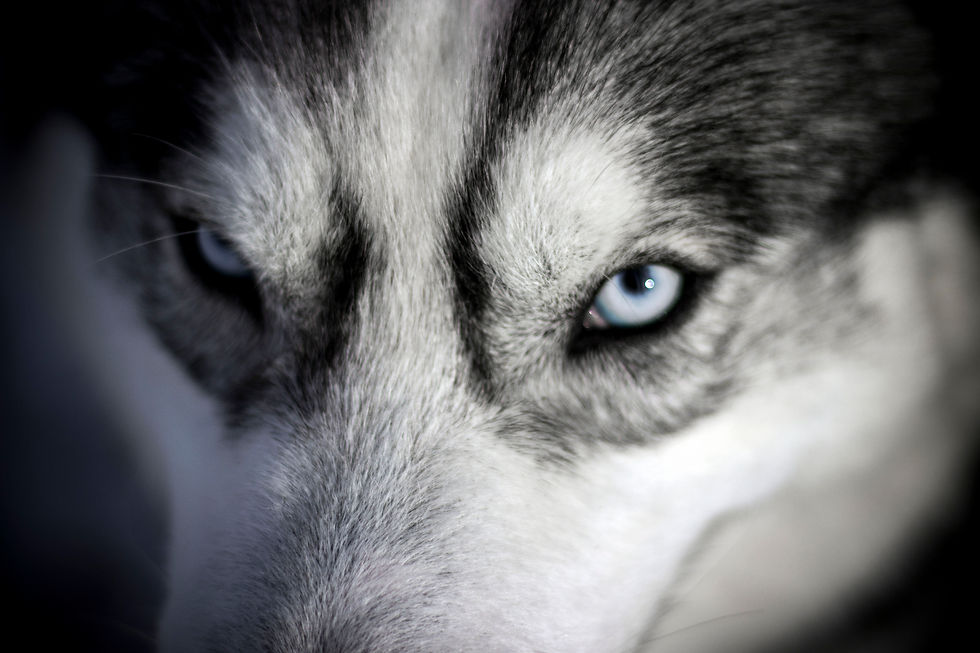
Husky FAQ
Bred in Northeast Asia as a sled dog, the Siberian Husky is known for its amazing endurance and willingness to work. Its agreeable and outgoing temperament makes it a great all-around dog, suitable for anything from sledding to therapy work. Because it originated in cold climates, Siberians have a thicker coat than most other breeds of dog, made up of a dense cashmere-like undercoat and a longer, coarse top coat. All colors from black to pure white are allowed, and a variety of markings on the head is common.
-
Personality: Friendly, gentle, dignified; alert, but not aggressive.
-
Energy Level: New owners should be prepared to provide an outlet for daily exercise.
-
Good with Children: Yes
-
Good with other Dogs: Yes
-
Shedding: Seasonal
-
Grooming: Ocassional
-
Trainability: Responds Well
-
Height: 21-23.5 inches (male), 20-22 inches (female)
-
Weight: 45-60 pounds (male), 35-50 pounds (female)
-
Life Expectancy: 12-15 years
-
Barking Level: Barks When Necessary
Temperament
The exotic, wolf-like appearance of a Husky appeals to many people. Their even temperament, love of kids, people, and other dogs makes them ideal family dogs. As born pack dogs, they enjoy being part of a family and get along well with other dogs, but don’t like being left alone for long periods of time. Siberians' innate warmth and love of making new friends, make them indifferent watch dogs. These are energetic dogs who can’t resist chasing small animals. They need secure running room, and walking them off-leash is risky. Siberians are naturally clean, with little doggy odor. Well bred Huskies should never be aggressive or overly shy and timid. Huskies have a zest for life that is unmatched by few breeds.
Activity Requirements
Siberian Huskies are very smart, but require training and exercise in order to maintain good behavior, health and happiness. Only those with the time and energy to fully commit to a Husky should take on this breed. Husky owners agree, you get out of a Siberian Husky what you put into him, and these reliable dogs are worth the effort. They were developed as sled dogs, which means they have energy and endurance to spare. Adopting a Husky means adopting an active lifestyle. This breed enjoys long walks, hikes, jogs and bike rides. They are rambunctious well into adulthood and need room to move about and play.
Grooming
The Siberian Husky is a comparatively easy dog to care for. Siberians are by nature a clean dog and free from body odor. Siberians clean themselves a lot like cats. Bathing requirements are minimal and many owners only bath their dogs a few times a year. The Siberian has a double coat of hair, underneath is a soft downy undercoat, protected by a harsh outercoat – which actually grows through the undercoat. The outercoat is ‘water-proof’ and protects the Siberian from rain, dirt, thorns, etc. The undercoat serves to provide insulation from hot and cold environments. Once or twice a year the Siberian Husky sheds his entire undercoat. This process can last up to six weeks from start to finish depending on how much time you spend grooming. All dead hair needs to be brushed out to enable quick and strong re-growth. A warm bath and a blow dry will encourage the hair to drop out evenly and easily – making it easier to comb out. Overall the Siberian needs very little grooming throughout the rest of the year compared to other breeds, just a regular brush to remove any dead hair




